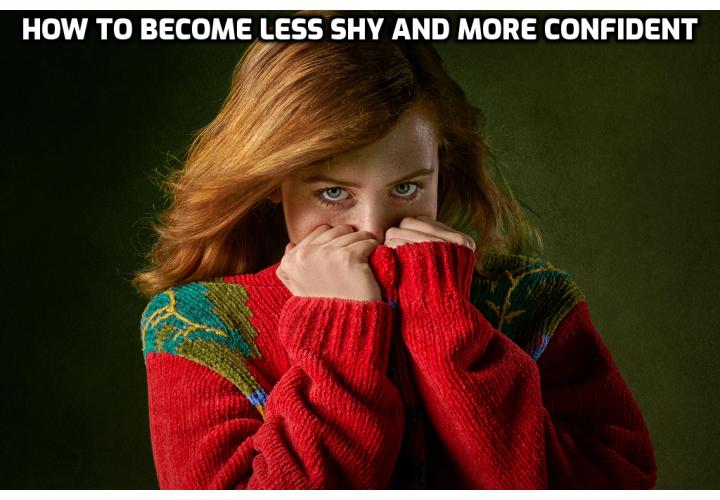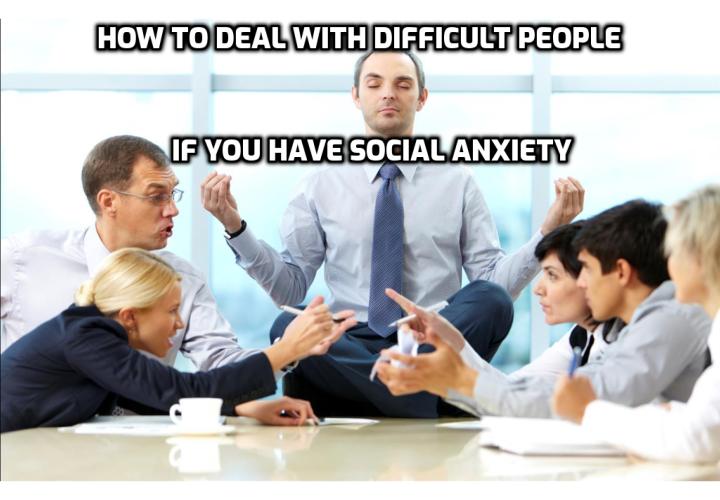CLICK HERE to Find Out How to Overcome
Your Social Phobia
Shyness Vs Introversion – Which One Do You Have?
Most people think that being “shy” and being “introverted” are the same thing. They use the two words as if they are identical.
In reality there’s a huge difference between shyness and introversion.
In this post, I’ll show you what this difference is, and how you can tell which one of the two you fit into.
Introverted People Have a Preference
First I’m going to explain what introversion is. Someone who is introverted likes to be alone more than the “average” person.
They may enjoy solitary activities like playing video games or reading books. They may also dislike group activities like going out to bars or socializing. Introverts also usually have fewer and closer friends than extroverts, who tend to have many more friends.
In short, being an introvert comes down to a personal preference. You prefer to spend more of your free time by yourself. It comes down to choosing to do what you personally enjoy. It’s the same as choosing to eat a certain food because you like how it tastes. Introversion is all about YOU.
Shy People Have a Fear
Shyness is totally different from introversion. Shyness isn’t a preference, but a fear.
When you are shy, you are constantly worried and afraid about what other people think of you. You care a lot about how you are coming across to others. Your fear of other people’s opinions makes you self-conscious, inhibited and quiet, especially around strangers.
Shyness is basically a nice word for fear. Unlike introverts, who prefer to “keep to themselves,” shy people may “keep to themselves” simply because they are avoiding anxiety, discomfort and fear.
Shyness is not about you and your preferences, but about OTHER PEOPLE.
Worrying about how other people perceive you and whether they will disapprove of you.
Which One Do You Have?
So what’s the difference between shyness and introversion? Shyness is a fear of other people’s negative opinion and reactions, while introversion is a preference to spend time alone and has nothing to do with fear.
How can you figure out whether you’re shy or introverted? Pay attention to how you feel inside when you are around people. Imagine you have to make a speech in front of a group of people and think about how you would feel inside.
If you would feel anxious, tense, scared, or nervous, then you have shyness. You have a fear of the situation. Other symptoms of shyness include not knowing what to say, being too quiet, or having physical reactions like sweating, shaking or blushing.
Someone who is shy may spend a lot of time by themselves, not because they prefer to, but because they want to avoid the fear and other uncomfortable feelings they get when they are put under the pressure of other people’s eyes.
On the other hand, if you can make presentations to groups comfortably and talk to other people with ease, but you still spend a lot of your time by yourself, then you are probably introverted. If you don’t feel fear or anxiety around people, but you still choose to be by yourself, then it probably means you have a preference for being solitary.
Shyness Is a Problem, Introversion Isn’t
In my opinion, there’s nothing wrong with someone who enjoys spending time alone. Everybody is different and has different personal tastes in the types of activities they enjoy. Some people just don’t enjoy being a social butterfly and that’s fine.
However, I take a different stand on shyness. Shyness, which is basically the fear of other people’s negative judgement, is a problem that should be tackled head-on. It’s a problem because it isn’t voluntary: people can’t choose whether or not to be anxious and nervous around others.
The bottom line is: shyness makes your life worse, not better. Shy people would usually love to have more friends and get a better social life, but their fear stops them from doing what they want. Removing this fear is a worthwhile goal that will improve your quality of life.
Watch this video – 5 practical steps to become less shy and more confident.
If you have shyness and want to find out a way to overcome it, then check out this page to find out how I went from a shy, insecure loner to a socially confident guy.
By Sean W Cooper, the author of The Shyness and Social Anxiety System, is an ex-sufferer from social anxiety and shyness. This program is a compilation of his research and effort in overcoming shyness and anxiety.
Sean W Cooper’s Shyness and Anxiety system is a step by step audio course broken down into modules that are easy to access. It teaches you ways to start overcoming your social anxiety and self-doubt. The system utilises cognitive behavioural therapy which explores how feelings and thoughts can drive behaviour.
The Shyness and Social Anxiety system is endorsed by professionals and praised by psychologists due to the way it provides the relevant skills to manage issues of shyness and social anxiety.
To find out more, click on How to Become Less Shy and More Confident?







